The huge variety of wildlife and plants out there means that the natural world is basically one giant rainbow! Taking a hike through your local park, you’ll likely see shades of green, red, yellow fruits, and plenty more without even thinking about it.
Fruits are a great example of the natural color spectrum in full flow, with plenty of vividly colored fruits available around the world.
In this article, we’re taking a look at some of the yellowest fruits out there.
Stick around to learn about some new fruits you may never even have heard of before!
1. Banana

Ok, we’re starting things off with a pretty obvious option. The humble banana is probably the first thing that came to your mind when faced with the title, ‘yellow fruits’.
Thanks to their high levels of potassium, bananas are favored by athletes and people who work physical jobs.
They work really well to help recover muscle damage and to strengthen the body’s immune system.
Whilst these fruits are almost exclusively grown in tropical regions like Asia, Central America, and Africa, you can pretty easily find them being sold everywhere in the world.
2. Melon

Another pretty common fruit to United States and European supermarket shoppers, the melon is many peoples’ favorite healthy, juicy snack.
There are, of course, plenty of different varieties of melons out there, all with their own unique properties, flavors, and colors.
In general, though, most melon varieties have a distinctly yellow exterior which often protects white or light yellow flesh inside.
One of the most popular varieties of melons in the world is the cantaloupe. In fact, there’s a good chance anybody reading this has eaten one before!
3. Lemon
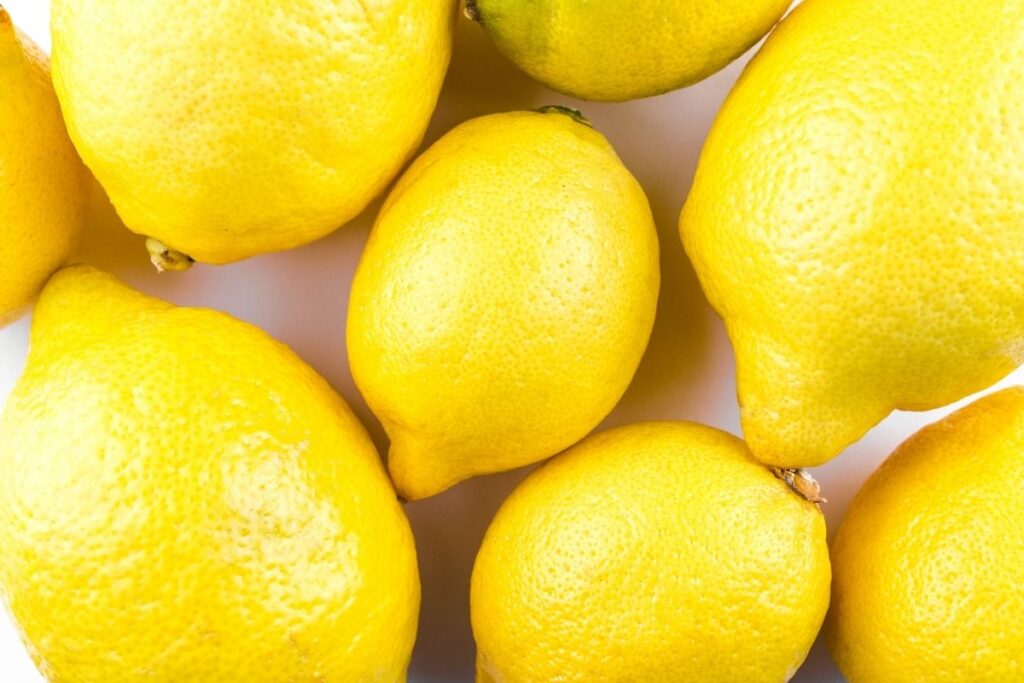
Many peoples’ favorite citrusy addition to a meal or drink, the classic lemon is very commonly found in plenty of restaurants and home kitchens around the world.
One of the best things about this fruit is its versatility, being used commonly in cocktails, meat dishes, pasta dishes, baked goods, and even into its own drink: lemonade.
Yes, the possibilities of what you can do with lemons are pretty much endless.
They are grown commercially most commonly in the Mediterranean region of Europe, in countries like Spain, Italy, and Greece.
However, they can just as easily be found growing in neighboring regions like Morocco and Israel.
This far afield growing pattern doesn’t stop the tasty little fruits from being transported and happily consumed in pretty much every country in the world.
4. Pineapple
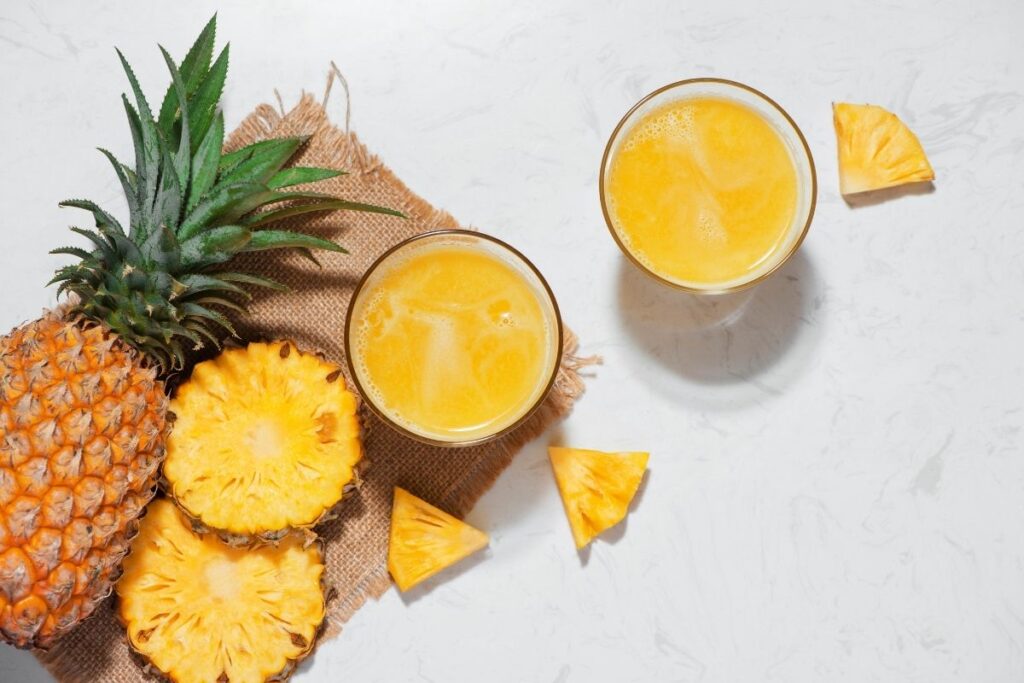
This one might seem like a controversial addition to our list. After all, the exterior skin of pineapple is certainly not yellow.
However, the golden flesh inside more than makes up for this and allows it to be included in this article.
Known as a fairly exotic fruit in North America and Europe, the pineapple was, at one point in history, used as a symbol of extreme wealth, as it was difficult and very expensive to get a hold of them.
Nowadays, you can find these fruits sold in just about every store in the world, allowing people to enjoy the juicy, sweet flesh inside the spiky shell.
Of course, they can be eaten raw, as a snack, just as easily as they can be used as ingredients or juiced to use for beverages.
5. Yellow Apple

Interestingly, there are actually a few varieties of apples that have yellow skin.
These include Jonagold, Crispin, golden delicious, Newton Pippin, and Rhode Island Greening.
Each of these apples has its own unique growing properties that make them more or less favorable to orchard owners in different parts of the world.
However, one thing they all have in common with regular apples is a delightful crunchy texture and sweet, juicy flavor.
Just like most other apples, these yellow apple varieties can be eaten raw but some are better suited for cooking and can be made into pies, tarts, and plenty of other dessert dishes.
6. Golden Kiwi
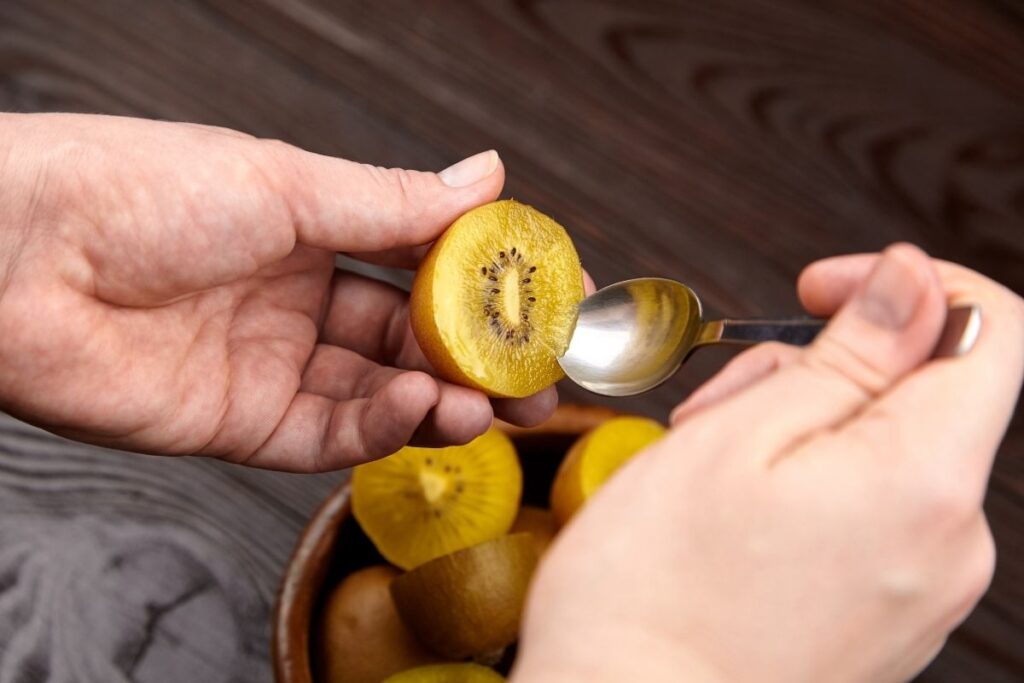
Not everybody might have known this already, but there are actually two different types of common kiwi.
Most people are familiar with the classic, green kiwi but there is also a golden variety that has bright yellow flesh.
On the exterior, these fruits are basically indistinguishable but, once you cut inside, you’ll realize the difference.
In terms of flavor and texture, there actually isn’t a great deal of difference between the two, either- if any at all.
However, everyone can agree that the soft, juicy flesh offers a gorgeously refreshing, healthy snack between meals.
7. Passion Fruit
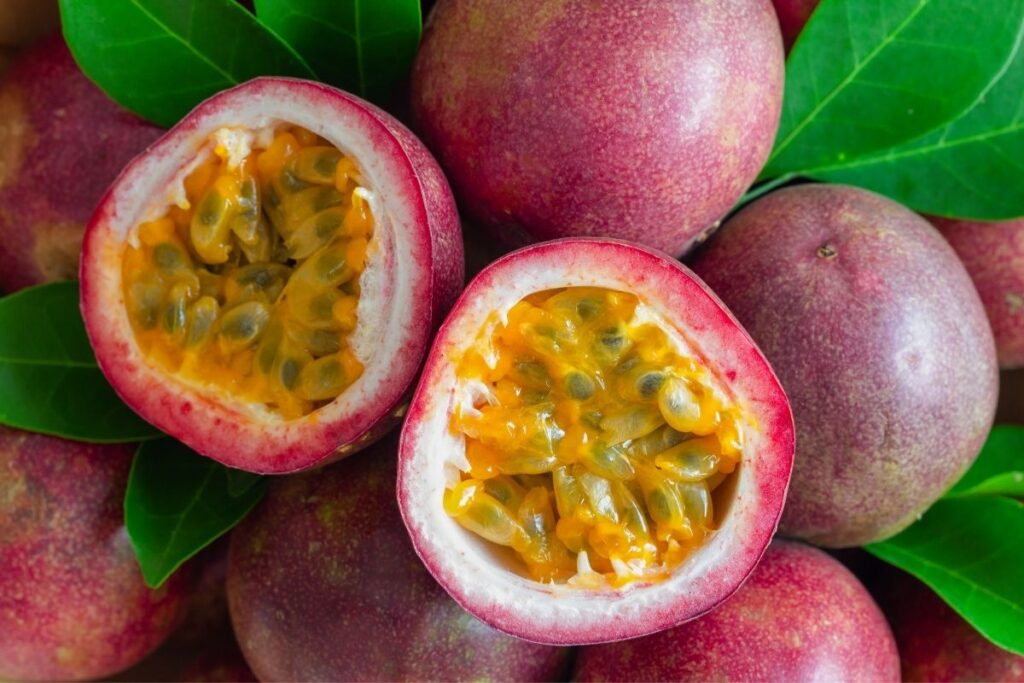
This is another exotic fruit that many of you will still be familiar with.
Passion fruits have a pretty extravagant appearance while growing in the wild, with a very detailed and beautiful flower often accompanying the fruit.
The fruit itself is a small, round, often purple object that houses jelly-like flesh and a series of seeds inside.
Most people in the US and Europe are more familiar with passionfruit juice than the raw fruit itself.
This is because consumers considered the flesh too unusual compared to the fruits that are traditionally sold there.
However, that doesn’t stop people from lapping up the deliciously fruity juice!
RELATED: Passion For Fashion: The Ultimate Guide To Passion Flowers
8. Yellow Cherry
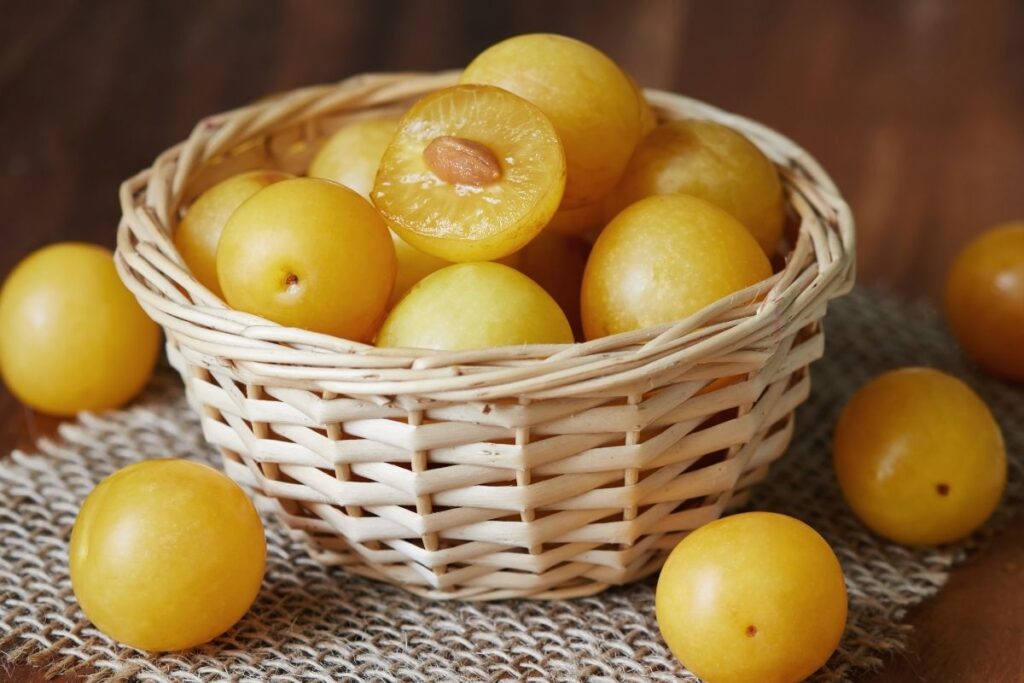
Interestingly, there are actually quite a few varieties of cherries that grow in unusually yellow colors.
Most people are familiar with classic red cherries as a delightful way to decorate a cake, cocktail, or just to eat as a snack.
Yellow cherries are pretty much the same as red cherries in terms of flavor and texture, meaning they can basically be used interchangeably.
The main differences between the varieties only concern their growing patterns, when they are ready to harvest, and what kind of conditions are required for growing them.
9. Durian
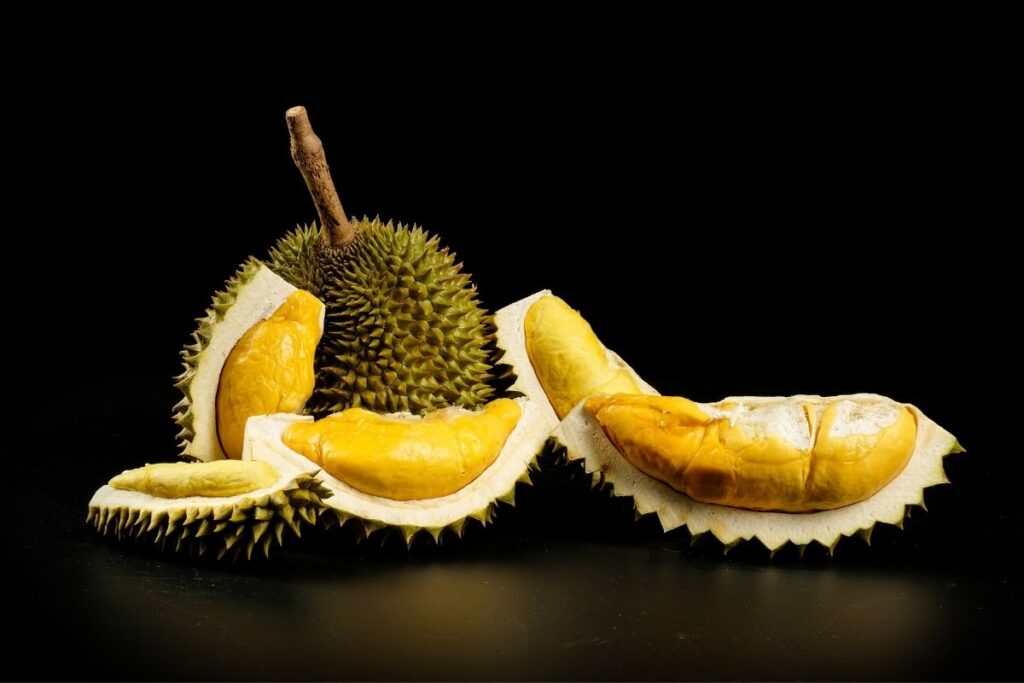
Now, this is certainly a fruit that not a lot of people will be familiar with.
It is primarily native to Borneo and Sumatra but is commonly sold and eaten all over Thailand and Malaysia.
They have a peculiar spiky brown exterior which gives way to bright yellow flesh inside.
The fruit has a very distinct aroma that often divides people as some find it delightful while others can’t stand it.
In fact, there are plenty of hotels and public transport services across Southeast Asia that ban the fruit for this reason.
Regardless of what you think about its smell, you’re definitely better off cooking durian fruit before eating it, to enhance its flavor.
10. Yellow Dragon Fruit
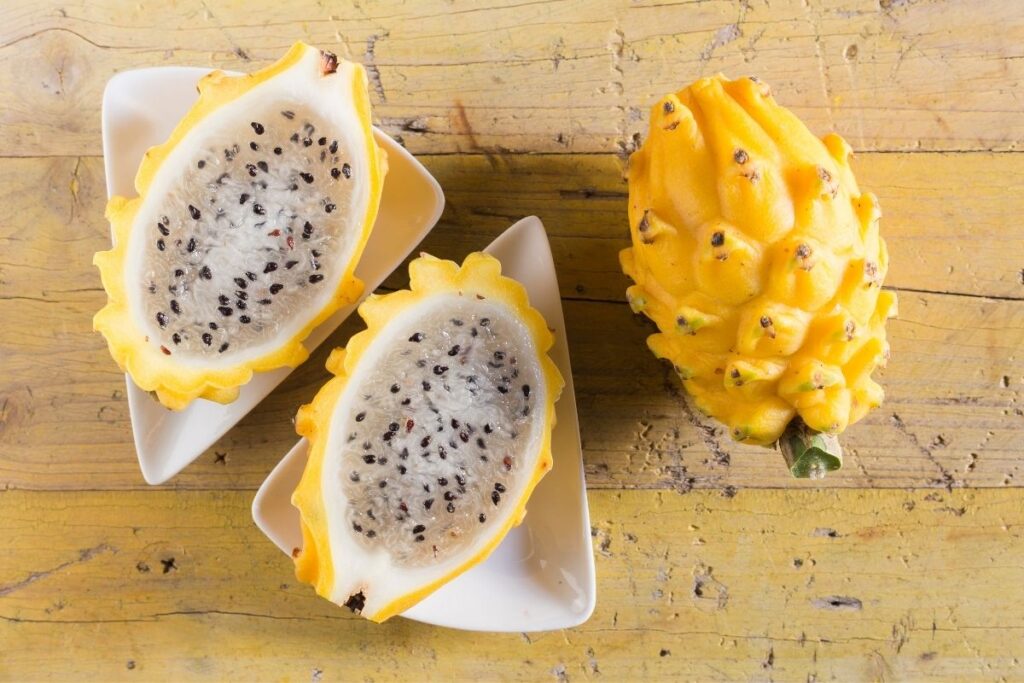
Dragon fruit can certainly be one of the wildest and most exotic fruits out there, not just because of its name.
The yellow dragon fruit, unsurprisingly, boasts a bright yellow exterior shell that features a series of bumps across the surface.
When you crack it open and get inside, it has interestingly white and black-speckled interior flesh.
This flesh have a mildly sweet flavor and is a popular snack for those who live in South America, to where the plant is native.
11. Jackfruit
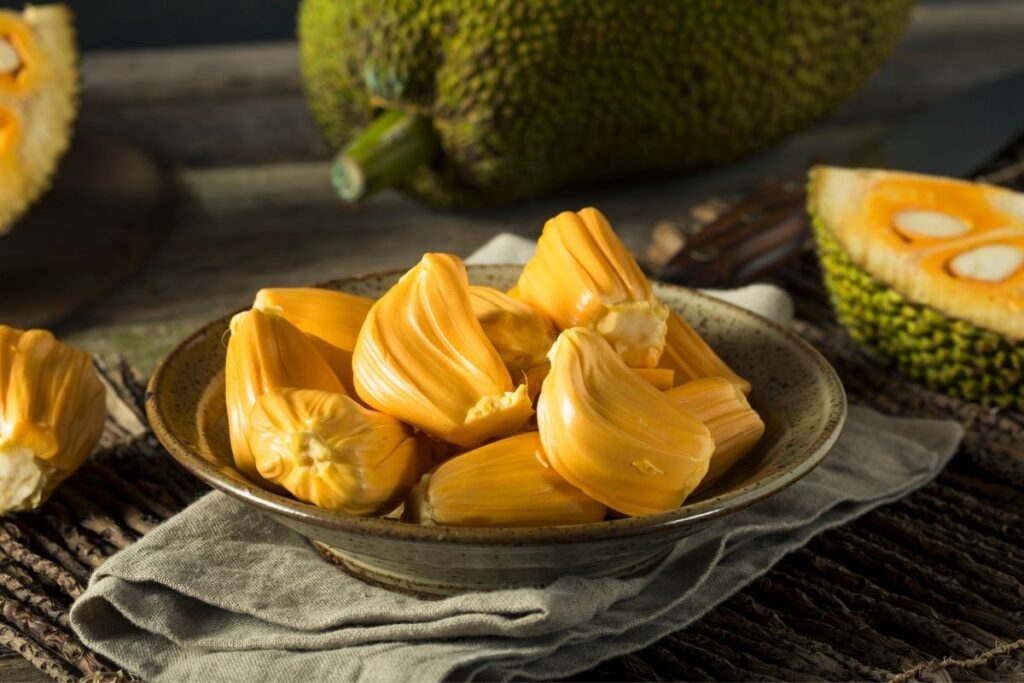
The jackfruit plant is native to regions in Asia such as India, Sri Lanka, and Malaysia.
This is because it needs tropical conditions to grow healthily and must be shipped overseas to be consumed elsewhere.
In recent years, some restaurants have incorporated jackfruit flesh into their menus as a vegan alternative to certain meats.
In fact, covered in barbecue sauce, jackfruit makes an interesting alternative to pulled pork.
They have a knobbly, green exterior skin but the flesh inside is a distinctly bright yellow.
12. Eggfruit

he flesh of the eggfruit has a characteristically soft texture that supposedly resembles a hard-boiled egg yolk. Hence where the name comes from.
As well as the texture, this fruit also shares a bright golden-yellow color with egg yolks. Making them stand out on the trees on which they grow.
You’ll find them growing in a variety of regions in the world. Ranging from North America to Australia and pretty much everywhere in between.
Commonly major supermarkets don’t sell them. But if you look hard enough, it shouldn’t be too difficult to find some online or in a more niche store near you.
13. Yellow Fig
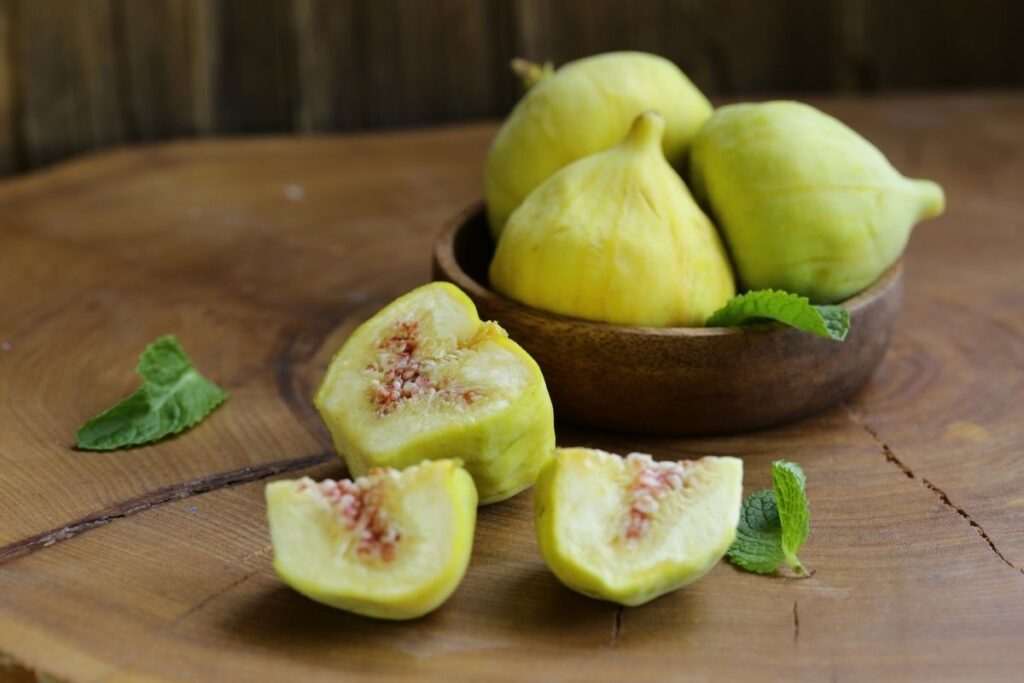
The final fruit we’re looking at on this list is the yellow fig. Which gets its name from its distinctive bright yellow skin.
You’ve probably seen the more common brown-skinned fig before. But the yellow varieties offer pretty much the same properties and flavors.
A lot of people avoid this fruit at markets. Because it can be more difficult to accurately determine when one is no longer ripe. But this doesn’t mean they’re any less valuable.
Like most fruits, yellow and brown figs won’t keep for too long, and consuming them fresh is the best.
RELATED: How To Propagate Fiddle Leaf Fig: What You Need To Know
Final Thoughts
Of course, there are probably hundreds of other yellow fruits out there that we didn’t have space to look at in this list.
However, these are some of the world’s most common and interesting yellow fruits that we could find.
Hopefully, you enjoyed learning about some new fruits thanks to our list. Feel free to check out some of our others to discover more about the wonderful, colorful world of fruits!
Hope you enjoyed reading this article, make sure to also check out our other articles:
13 Different Fruits That Start With V (Including Photos)







